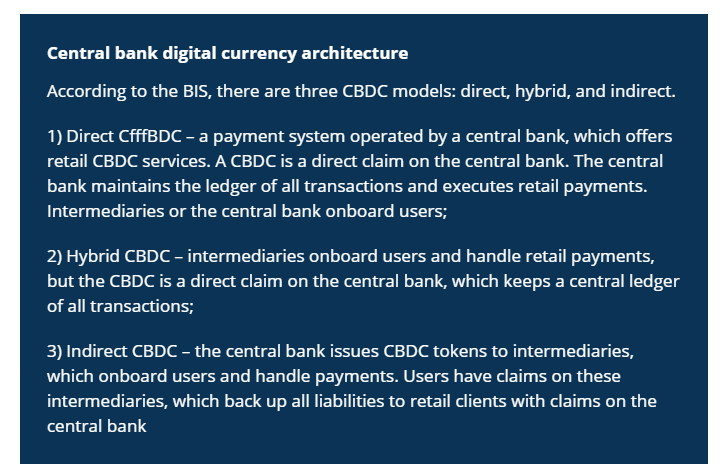
Two Caribbean central banks have introduced central bank digital currencies, overtaking developed countries which are still at the investigation stage. An underbanked sparse population, spread over many islands, makes the Caribbean an ideal test case for CBDCs, which promise lower transaction fees and economic growth, Robin Arnfield reports
The world’s first live CBDC, the Sand Dollar, was launched by the Central Bank of the Bahamas in October 2020, while the Eastern Caribbean Central Bank (ECCB) is preparing to launch its dCash CBDC following a pilot.
In July 2020, the Bank of Jamaica formally invited interested CBDC providers to develop and test potential CBDC solutions in its fintech regulatory sandbox. In addition, the Netherlands Antilles islands of Curaçao and St. Maarten are in an R&D phase for CBDC. The Governor of the Central Bank of Barbados, Cleviston Haynes, said in July 2020 that his country’s central bank is conducting research into CBDCs.
Not to be confused with decentralised borderless cryptocurrencies such as bitcoin, CBDCs are digital legal tender issued by central banks, reflecting a country’s existing fiat legal tender in a 1:1 ratio.
According to a January 2021 survey by the Bank for International Settlements (BIS), 86% of central banks are exploring the benefits and drawbacks of CBDCs.
Countries developing CBDCs include Sweden, Cambodia, and China, whose central bank expanded its digital renminbi pilot to the three largest Chinese urban regions in August 2020.
How well do you really know your competitors?
Access the most comprehensive Company Profiles on the market, powered by GlobalData. Save hours of research. Gain competitive edge.

Thank you!
Your download email will arrive shortly
Not ready to buy yet? Download a free sample
We are confident about the unique quality of our Company Profiles. However, we want you to make the most beneficial decision for your business, so we offer a free sample that you can download by submitting the below form
By GlobalDataWhy the Caribbean?
There are various reasons why central banks in the Caribbean would adopt digital currencies ahead of larger central banks. The islands have low financial inclusion levels; high cash usage; high costs of current payment methods and banking services; inadequate banking services; and inefficient payment systems resulting in slow electronic transfers and settlement.
By contrast, CBDCs offer consumers 24×7 accessibility and faster, simpler payments, and increase economic participation among all sectors of society, said Simon Chantry, CIO of Barbados-based fintech Bitt, which supplied the technology for the ECCB’s project.
“These (CBDC) systems offer merchants lower payment processing fees than traditional mechanisms, and, since the transaction also constitutes the settlement, payments can be received instantly,” he said. “When merchants receive digital currency for goods and services, they can spend it immediately.”
Tracey Walker, a senior financial consultant with advisory firm Cartan Group, said the Caribbean central banks recognise the economic benefits to be gained from CBDCs, not least the ability to reduce the transaction fees that apply to traditional payment rails. “The Caribbean region has gained significant traction on the CBDC scene when considering its size compared to global players,” she said.
Reducing the cost of moving cash is a key advantage offered by CBDC in the Caribbean. It is expensive for the ECCB and the Central Bank of the Bahamas to distribute cash to the various islands in their jurisdictions, as cash has to be flown out to the islands, said Gwenn Bézard, research director at US-based Aite Group.
Logistical difficulties of handling cash in the Caribbean
Yvette Bohanan, education engagement manager at US-based Glenbrook Consulting, also pointed to the challenge of handling cash in the Caribbean. “CBDCs provide an opportunity for retail banks to increase reach into communities where bank branch locations and cash distribution can be challenging and expensive,” she said. “By lowering the costs associated with cash management, banks could direct resources to deepening financial inclusion and adding attractive services to the CBDC digital wallet for their expanded customer base.”

“Glenbrook’s perspective is that there is broad, conceptual support for CBDCs across the ECCU, shaped by the common goals of financial inclusion, increased efficiency in managing currency, making payments systems more efficient – less expensive to manage for the banks, faster and safer for consumers – and improved monitoring to prevent illicit activities,” said Bohanan. “There is also consensus on these goals in the other Caribbean countries which are actively pursuing CBDCs.”
It is not intended that CBDCs replace banks and cash in the Caribbean. “Our current research indicates that cash currencies will coexist with CBDCs for some period of time,” said Bohanan.
While the ECCB’s and Central Bank of the Bahamas’ CBDC initiatives are being rolled out as stand-alone solutions, there are plans to integrate them with mainstream incumbent banking infrastructure, said Francesco Burelli, a consulting partner at advisory firm Arkwright. “This would maximise the reach and utilisation of the CBDCs,” he said. “The ECCB and Central Bank of the Bahamas’ CBDC initiatives will benefit from these central banks’ ability to control the money supply, oversee transactions ensuring auditability, and requiring KYC compliance to be observed when opening digital currency accounts.”


The Central Bank of the Bahamas’ Sand Dollar is tied to the Bahamian dollar.
A pilot of the CBDC took place in 2019 on the Bahamas islands of Exuma and Abaco, which have a combined population of 25,000.
Fully available to all the Bahamas’ 393,000 residents since October 2020, the Sand Dollar is backed by a digital payments infrastructure designed by fintech firm NZIA, which also provided the CBDC technology. The central bank is also working with US-based CBDC specialist Emtech.
The Sand Dollar is designed to enable the Bahamian government to better manage the impact of hurricanes by providing digital distribution of financial relief instead of cash aid to its citizens. The CBDC is also intended to help provide financial services to the more remote of the Bahamas’ 300 plus islands and islets.
Sand Dollars are issued by the central bank to interoperable digital wallets held by an initial tranche of six licensed money-transfer and payment firms. Through these digital wallets, consumers and businesses can access, hold, and spend Sand Dollars via a mobile app. Three other companies, including a bank and a credit union, are expected to complete cybersecurity testing in early 2021, after which they will be able to provide their customers with Sand Dollar wallets.
Sand Dollars can be held in three tiers of authorised accounts:
1) Low-value personal wallets with a B$500 wallet holding limit and a B$1,500 monthly transaction limit. Government-issued identification isn’t an enrolment requirement, and the wallets cannot link to bank accounts.
2) B$5,000 wallet holding limit, with a B$10,000 monthly transaction limit. Government-issued identification is required for enrolment, and the wallets can be linked to bank accounts.
3) Business or enterprise accounts, subject to further KYC rigour and subject to higher limits for CBDC transactions and holdings.
Accounts holding Sand Dollars don’t use a distributed ledger, but are instead held at the Central Bank of the Bahamas. The central bank maintains the ledger of all individual holdings of the digital currency, according to Glenbrook’s Bohanan.
The Eastern Caribbean
In March 2019, the Eastern Caribbean Central Bank (ECCB), launched a pilot of dCash (https://www.eccb-centralbank.org/p/about-the-project), a digital blockchain-based version of the Eastern Caribbean Dollar.
The ECCB is the monetary authority for the East Caribbean currency union (ECCU) operated by the islands of Antigua and Barbuda, Dominica, Grenada, Saint Kitts and Nevis, Saint Lucia, Saint Vincent and the Grenadines, Anguilla, and Montserrat. The islands have a combined population of 620,000.
dCash is intended to be used for payments between consumers and merchants and P2P transfers using smart devices. Its objectives are to increase opportunities for financial inclusion; to reduce the region’s use of cash and cheques, which account for about 80% of all ECCU payments; and to address the relatively high cost of current payment methods and banking services, and the inadequacy of banking services in addressing customers’ needs.
As part of its payments modernisation plans, between 2019 and 2025 the ECCB is targeting a 50% reduction in cash usage, an 80% reduction in cheque usage, and growth of 40-60% in the use of credit and debit cards and electronic payment systems, according to Trinidad and Tobago Newsday. However, the ECCB doesn’t intend to eliminate cash.
The dCash pilot’s first phase involved internal development and testing, followed by initial implementation during 2020 in Antigua and Barbuda, Grenada, Saint Lucia, and St. Kitts and Nevis. In January 2021, the ECCB said that it was preparing for the public launch of the pilot in the coming weeks in these four island territories.
“The ECCB has indicated its intention to roll out dCash in all of the ECCU territories once the six-month pilot in Antigua and Barbuda, Grenada, Saint Lucia, and St. Kitts and Nevis is complete,” said Bitt’s Chantry.
The ECCB issues and distributes dCash to licensed banks and non-bank registered agents in the ECCU for distribution to the digital wallets of registered users. dCash uses a permissioned and private blockchain platform based on IBM Hyperledger Fabric and built by Bitt (www.bitt.com).
“Bitt’s Digital Currency Management System includes the critical digital infrastructure and software needed by central banks and participating financial institutions to issue and operate their own digital currency,” said Chantry. “The Bitt software suite is designed to integrate into traditional financial, banking and payment systems. Bitt also provides the software for FIs, businesses and merchants to integrate digital currency within their business operations for a variety of transaction types.”
According to Aite Group’s Bézard, 16 banks are involved in the pilot. “The ECCB is more engaged with the ECCU banks regarding involvement in dCash than the Central Bank of the Bahamas is with the banks in its jurisdiction regarding the Sand Dollar,” he said.
dCash benefits for the unbanked
Currently, participating banks are reaching out to their merchant clients to invite them to participate in the dCash pilot. In addition, participating banks are inviting consumers who hold bank accounts with them to take part in dCash by sending them a code for use with the dCash app. The banks then use their existing knowledge of their customers as KYC for onboarding them to dCash.
Unbanked consumers or people whose FI isn’t participating in the pilot, can obtain dCash accounts from registered agents. They provide the agent with their name, address and government photo ID, which they upload to the dCash app.
Consumers participating in the pilot can make purchases and instantly transfer money using dCash for free to family, friends and businesses within the ECCU without needing bank accounts. To acquire dCash in their dCash wallet, users deposit cash at participating merchants and approved service providers such as financial institutions, or convert funds from their bank account at pilot-participating FIs.
To make merchant payments or perform P2P transfers, users scan the merchant’s or recipient’s QR code with their smartphone, which populates their dCash wallet with the merchant/recipient’s ID and the amount of the transaction. Senders can also manually enter the recipient’s ID and transaction amount in their DCash app.
In March 2020, the International Monetary Fund (IMF) warned that the ECCB should proceed with caution in developing its CBDC. While the monetary policy implications of a CBDC would be limited due to the ECCU’s fixed exchange rate regime, safeguards need to be implemented to counter risks relating to financial intermediation, financial integrity, and cybersecurity, the IMF said.
Jamaica
The Bank of Jamaica is actively exploring the introduction of a CBDC. In July 2020, the central bank invited interested CBDC providers to develop and test potential CBDC solutions in its fintech regulatory sandbox. The sandbox provides a controlled environment where fintech innovations can be tested for viability while ensuring adequate consumer protection and data privacy before rollout in Jamaica.
The central bank said that, if a viable CBDC is adopted and introduced in Jamaica, the anticipated benefits include increased financial inclusion, as it will provide another means of efficient and secured payments. For deposit-taking institutions, CBDC presents an opportunity to improve cash management processes and costs, it said.
Cartan Group’s Walker wrote in a blog: “This project is interesting as (the Bank of Jamaica) announced the use case will cover both wholesale and retail systems, meaning the CBDC will be implemented from the central bank right down to the general public, as a means of payment.”








